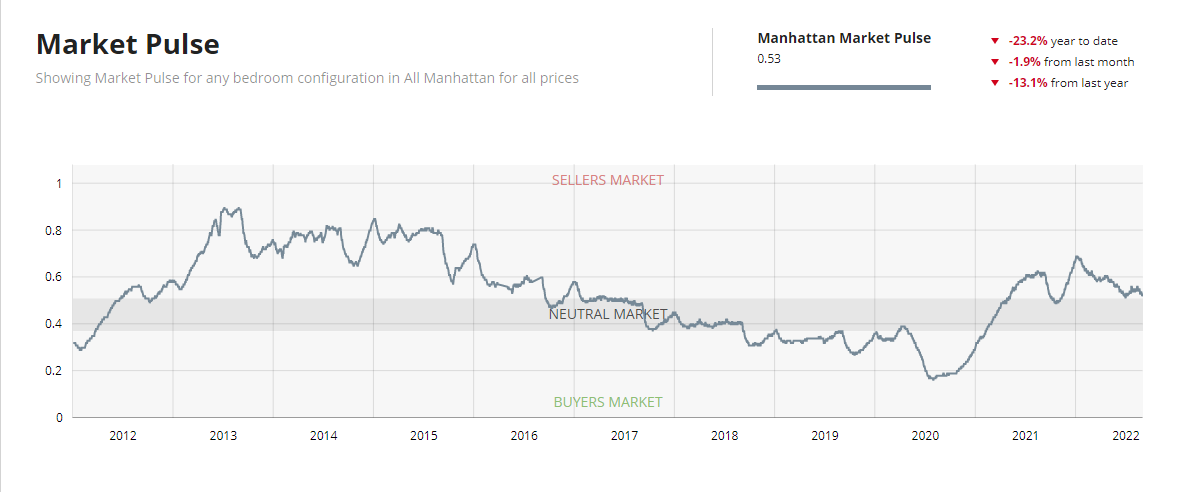The Overall Manhattan Market remains in Seller’s Market Territory. The Manhattan Market Pulse chart for all bedroom configurations and price points by Urban Digs demonstrates the ratio between pending sales (a measure of demand) and supply being edged towards benefitting sellers.
An increase indicates a strengthening market. A decrease indicates a weakening market.
Every neighborhood area and every single building has its little micromarket. Therefore, each neighborhood and building has its own supply and demand dynamics. While there are like-kind buildings, there are unique features to buildings and apartments. Like-kind buildings are valued by the marketplace differently due to many factors. These factors include amenities, capital improvements, views, monthlies, building rules, proximity to transportation or parks, and even culture. That is why two similar buildings situated side by side will have their Market Pulse and be perceived by the marketplace differently and valued differently. Apartments in the same building are valued differently due to factors such as view (perceived light and air), monthlies, closet space, type of floor, floor level, apartment amenity package, size of apartment, functionality, and condition.

The Infographic below indicates overall that we are in a Sellers’ Market primarily due to low inventory in various markets.
![Here's Why It's Still a Sellers' Market [INFOGRAPHIC] | MyKCM](https://files.mykcm.com/2022/09/01081742/20220902-MEM-1046x1874.png)
Key Takeaways
- While buyer demand has moderated and housing supply has grown in recent months. It’s still a sellers’ market because inventory is low.
- The latest data shows sellers continue to benefit from serious buyers and competitive offers. In July, the average home received 2.8 offers, and 39% sold over the asking price.
- While scrolling through Zillow listings that can fulfill house-hunting fantasies, Jonathan Miller cautions against treating the site’s “Zestimates” (a home’s perceived value at resale) as hard facts. “The median accuracy rate of a Zestimate is 2 percent,” he says. “So you go, ‘Wow, they’re within 2 percent, that’s pretty good.’ [But since] it’s median accuracy, that means 50 percent of the time, they’re within 2 percent—and 50 percent of the time, they’re not.”
- You haven’t missed your opportunity to sell. Let’s connect to start the process today.
Additional educational articles about the market are located under Karen’s Blog Articles.

